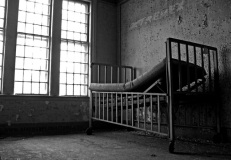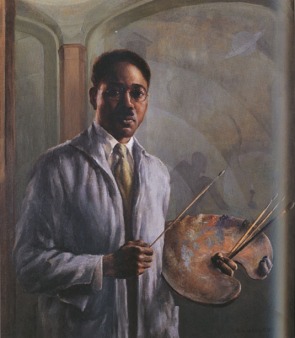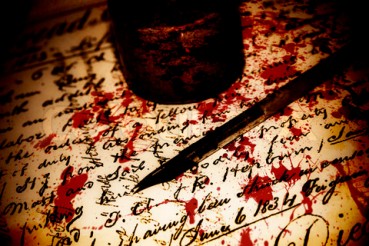Prompt: You are going to assume the identity of Joby from “The Drummer Boy of Shiloh,” Ashton from “A Glimpse of Heaven,” or the unnamed child soldier from “Blue Child: A Civil War Poem” and create a journal entry discussing a symbol that is important to you in your life and how that symbol differs from a friend you met on your journey during The Civil War (one of the other two characters). Remember that a symbol can come in the form of an animal, abstract idea or physical object.
Requirements:
- Choose one symbol from the short story or poem that you chose.
- Choose one symbol from one additional short story or poem.
- At least 3-4 pieces of textual evidence that show the importance of the two symbols.
- A minimum of 2-3 paragraphs that explain the importance of the two symbols.
__________________________________________________
10/31/1861
Dear Journal:
 I fear as if I do not have much time left. I spend my waking moments knowing that time is precious and when I fall asleep tonight, I may not wake in the morning. I have known this cold reality since I developed an infection on the battlefield a few weeks ago. The medical personnel in my regiment told me I would have to wait like the other blacks on the front lines in order to receive treatment. Once I waited too long and the infection spread, I abandoned my regiment in order to find refuge in the home of my former master whose wife is a nurse. The thought of coming face to face with him again caused many sleepless, miserable nights, but I swallowed my pride and dragged my ailing body to his doorstep. While my former master was bewildered to see me, he and his wife reluctantly decided to take me in because they felt indebted to my years of service. Now, I write from an old, withered bed with only an old friend’s story about his drum and the touch of my blue uniform to keep me going.
I fear as if I do not have much time left. I spend my waking moments knowing that time is precious and when I fall asleep tonight, I may not wake in the morning. I have known this cold reality since I developed an infection on the battlefield a few weeks ago. The medical personnel in my regiment told me I would have to wait like the other blacks on the front lines in order to receive treatment. Once I waited too long and the infection spread, I abandoned my regiment in order to find refuge in the home of my former master whose wife is a nurse. The thought of coming face to face with him again caused many sleepless, miserable nights, but I swallowed my pride and dragged my ailing body to his doorstep. While my former master was bewildered to see me, he and his wife reluctantly decided to take me in because they felt indebted to my years of service. Now, I write from an old, withered bed with only an old friend’s story about his drum and the touch of my blue uniform to keep me going.
During my travels with the Union army, I met a 14-year-old drummer boy by the name of Joby on the eve before the Battle of Gettysburg. Although we are the same age, he stands barely half my size and is scrawnier than a field mouse. Joby, nonetheless, banged his drum as if he were a giant and carried himself that way too. Growing more ill and weary by the minute from my infection, I begged Joby to tell me how he managed to carry himself so tall. Without hesitation, he informed me that by carrying his drum, he represented “‘the heart of the army”‘ (Bradbury 322). With a single stroke of that drum, he could command an entire army and see the “waves [of men] rolling [into battle] like a well-ordered calvary” (323). He possessed so much power in a single instrument. Before I left on the journey to my former master’s home, Joby reminded me that I needed to find that one special symbol like his drum so I could stand as tall as him during my travels.
As I lay here with “expiring eyes,” I am weak, but know that I am not “wearing the burden of blue” like my former master believes I am (Gotthardt 19,22). When I escaped for my freedom, I was “freer” than he was (17). I was free from the mindset that slavery is a necessary evil. I was free from the plantation he will have to tend to without his slaves. Soon, I may be free from the ignorant people of this world. If I die soon though, I know the color blue will still live on in the hearts and minds of many men and women like me. If I die soon, I know the color blue will echo its cries of freedom loudly throughout this great nation. Blue is not a burden. Blue is hope. Blue is freedom. Blue is the color of empathy that allowed my former master to see that my tears “look[ed] like his” (2). Blue is the color that will help the world look at their darker brothers for the flesh and blood they share.
 Aaron Douglas was a prominent painter during the Harlem Renaissance movement. Through his artwork, Douglas hoped to convey the struggles and triumphs of African Americans from their roots in Africa to their modern day fight for equality. Choose a piece of artwork below to analyze how Douglas hoped to portray that journey through the questions below.
Aaron Douglas was a prominent painter during the Harlem Renaissance movement. Through his artwork, Douglas hoped to convey the struggles and triumphs of African Americans from their roots in Africa to their modern day fight for equality. Choose a piece of artwork below to analyze how Douglas hoped to portray that journey through the questions below.





 I risk mailing these letters behind enemy lines because I believe the bond of friendship is stronger than the brute of men who wage this war. I still remember the days in which we picked peaches in your grandmother’s backyard and ate them under the river birch trees while we watched the train chug past the plantation. I still remember the days before our fathers sent us off to the army to enlist in a cause they believed in, but were too old and weak to fight for. That memory helps me dream of days in which you and I are no longer defined by the colors blue and gray. I want you to see those days too, but if you don’t stop avoiding the reality of death like I did, I fear those days will be only bitter, meaningless dreams.
I risk mailing these letters behind enemy lines because I believe the bond of friendship is stronger than the brute of men who wage this war. I still remember the days in which we picked peaches in your grandmother’s backyard and ate them under the river birch trees while we watched the train chug past the plantation. I still remember the days before our fathers sent us off to the army to enlist in a cause they believed in, but were too old and weak to fight for. That memory helps me dream of days in which you and I are no longer defined by the colors blue and gray. I want you to see those days too, but if you don’t stop avoiding the reality of death like I did, I fear those days will be only bitter, meaningless dreams. I fear as if I do not have much time left. I spend my waking moments knowing that time is precious and when I fall asleep tonight, I may not wake in the morning. I have known this cold reality since I developed an infection on the battlefield a few weeks ago. The medical personnel in my regiment told me I would have to wait like the other blacks on the front lines in order to receive treatment. Once I waited too long and the infection spread, I abandoned my regiment in order to find refuge in the home of my former master whose wife is a nurse. The thought of coming face to face with him again caused many sleepless, miserable nights, but I swallowed my pride and dragged my ailing body to his doorstep. While my former master was bewildered to see me, he and his wife reluctantly decided to take me in because they felt indebted to my years of service. Now, I write from an old, withered bed with only an old friend’s story about his drum and the touch of my blue uniform to keep me going.
I fear as if I do not have much time left. I spend my waking moments knowing that time is precious and when I fall asleep tonight, I may not wake in the morning. I have known this cold reality since I developed an infection on the battlefield a few weeks ago. The medical personnel in my regiment told me I would have to wait like the other blacks on the front lines in order to receive treatment. Once I waited too long and the infection spread, I abandoned my regiment in order to find refuge in the home of my former master whose wife is a nurse. The thought of coming face to face with him again caused many sleepless, miserable nights, but I swallowed my pride and dragged my ailing body to his doorstep. While my former master was bewildered to see me, he and his wife reluctantly decided to take me in because they felt indebted to my years of service. Now, I write from an old, withered bed with only an old friend’s story about his drum and the touch of my blue uniform to keep me going.